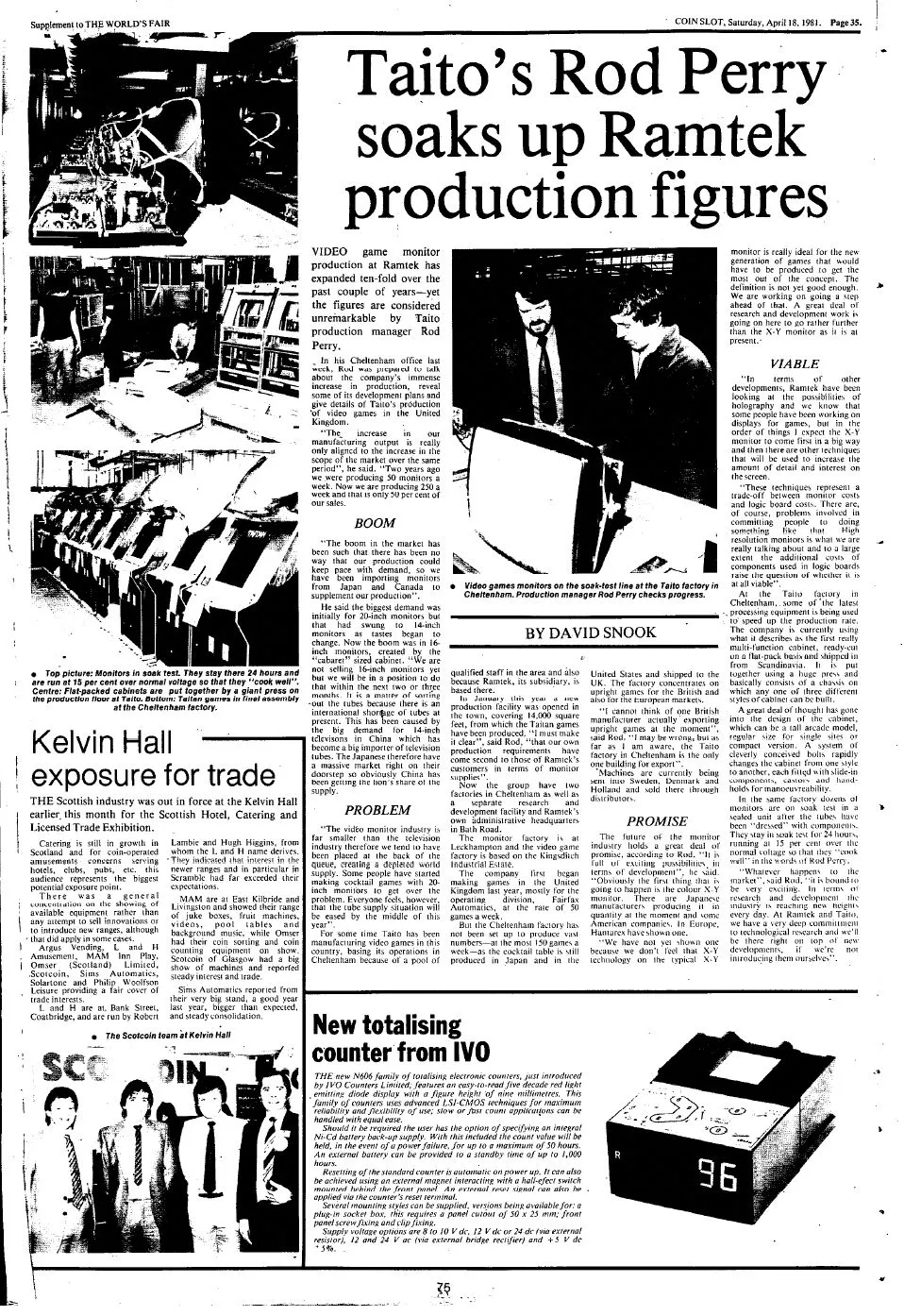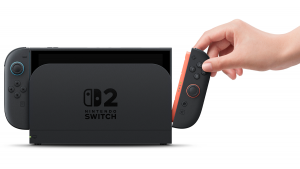The Bizarre Taito Taitan arcade cabinet

Generic cabinets from the Golden Age of arcade gaming tended to be functional workhorses. Of course the beauty of dedicated cabinets from manufacturers such as Atari, Williams, Gottlieb and Sega is undeniable. Those cabinets usually had bespoke designs, dedicated controls and glorious artwork, all designed to draw players in.
But generic cabinets tended to be functional, built to withstand the rigours of life out on the arcade floor. They were popular with arcade operators, as they were designed to accommodate new games without the expense of replacing a complete cabinet. Commercially, ops could keep things fresh by simply swapping out the PCB and delivering a brand new game at a fraction of the cost of purchasing a brand new complete machine. Over here in the UK, a “chip shop” Jamma cabinet was the staple of many gaming experiences – the format was released in 1985 and caught on quickly, for the reasons stated above. It made much more sense than the costly ‘scrap and replace’ nature of buying dedicated arcade machines.
But without the full art package, the cabinets that housed Jamma-based arcade games were usually ugly things that merely relied on the game’s attract mode to draw in players. These “universal” machines were work horses, not pieces of art.
That said, there were occasions when some manufacturers toyed with design ideas to attract players to these generic cabinets.
In 1981, Japanese manufacturer Taito designed a universal cabinet, known as The Taitan that could accommodate any one of twelve of its most popular games. Preceding the Jamma standard by some four years, the idea behind the cabinet was to tie in operators to Taito games. The thinking being that most games had a shelf life of 6-9 months. Taito’s reasoning was that it could accommodate multiple titles at a fraction of the usual typical cost of replacing a game.
But what about the player? How could operators draw players to these otherwise rather dull cabinets?
As far as I can tell, the Taitan cabinet was designed exclusively for the UK market. In order to make the machine stand out, Taito approached and commissioned two UK based brothers, Roger and Martyn Dean. Roger by that time was a renowned artist, responsible for designing many psychedelic album covers for various bands throughout the 70s. His most recognisable work was for the band Yes.

As an aside, as well as working extensively with Yes over many years, Roger Dean would also go onto create some of the most well known and revered box artwork for videogame developer Psygnosis – read more about that here.
So Roger’s artistic vision and pedigree was enough to persuade Taito that he could create something that would appeal to (and draw players to) an otherwise generic looking arcade cabinet. His provenance meant that he was commissioned, along with his brother Martyn, and work began in late 1980.
We took the essence of what’s on the video screen and put it on top of the cabinet too…
Martyn Dean, speaking in 1984
Taking inspiration from the games housed within arcade cabinets, the two brother’s looked to revolutionise player’s perceptions of what an arcade cabinet could look like:
Despite interstellar mayhem on the screen, the video cabinets remained boring brown boxes, enlivened only with comic book flash. The Deans started work on redesigning the machines. Instead of looking like everybody’s television set, wood-grained to match the living room furniture, they felt Space Invaders should look like just that – invaders from space. Martyn Dean went for a natural image, mutated: the traditional Bug-Eyed Monster, while Roger Dean’s creation was more belligerent, a futuristic Teutonic knight, a Robot Warrior.
Extract form the book “Magnetic Storm” by Roger and Martyn Dean, 1984
So two designs were worked up. One looking like an alien-like ‘Bug’ and the other known as the ‘Robotic Knight’.


The creations had to survive constant use and be resistant to potential vandalism on the arcade floors. The cabinet heads were created using a process call Reaction Injection Moudling (RIM). RIM mouldings are made from polyurethane foam injected into moulds at high pressure, the same as modern car bumpers. The paint was polyurethane, which bonded chemically to the surface so that it could not be chipped or scraped off.
RIM, or reaction injection moulding, is a cold casting process that begins life as two separate liquids. Different materials, including polyurethanes, polyesters, and epoxies can be processed using re
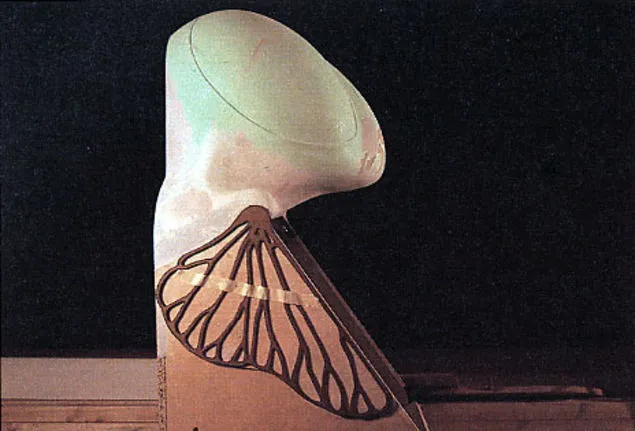
The final result was stunning:


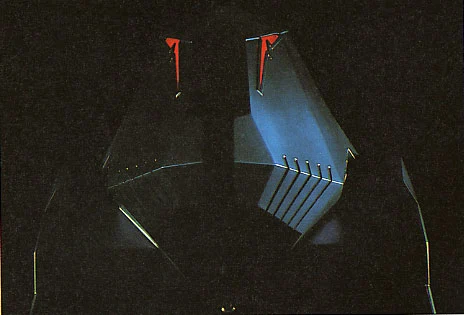
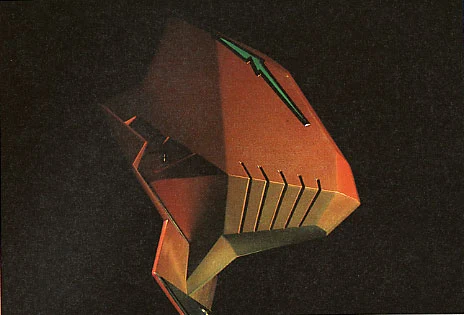
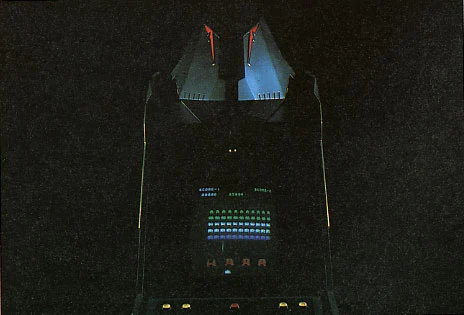

A subsidiary of Taito was set up in the market town of Cheltenham here in the UK to produce the Taitan cabinets. This company was in fact long standing manufacturer Ramtek. Formed by three former GCHQ engineers, the company was set up to design and manufacture CRT monitors.
Taito then invested in upgrading the Cheltenham operation. A new factory was acquired and a new production line installed, along with a test soak facility for CRTs and arcade PCBs.

I’ve been fortunate enough to talk to a former employee at Ramtek who described working for the company:
We were a small team of seven; one foreman, five workers and a storeman. Once we were up and running we were making 48 machines a week. These went out at about £2.5k each (I think). The “bug heads” added about another £600. does not sound a lot, but beer was 30p a pint and spirits 32p! My wage was £125pw. Once the line was up and running I was sent down to Coleford in the Forest of Dean to oversea a refurbishment contract at the sheltered workshop. I had to report to head office at Cheltenham each morning. On one occasion I was transporting a set of boards to Coleford. 200 boards at £1000 each, my little Morris 1000 car was worth more than a Rolls Royce that day!
Evan Boardman – former Ramtek employee
There’s some question over the actual cost added to the price of the cabinets as a result of the addition of the Taitan toppers; estimates vary from £600 to £1,000. But one would assume the additional outlay needed serious consideration by the market.
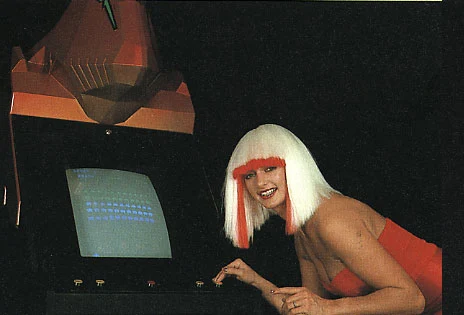
To research the project, we had several machines installed in the office. Everybody became addicted and spent a frightful amount of time on them. But everybody also became ambidextrous, and productivity actually rose. When you’re shot full of adrenalin it has to go somewhere, so you work like a demon.
Martyn Dean describes the atmosphere during the design phase
Here’s an interesting press cutting from Coin Slot Magazine in 1981. Taito’s Rod Perry talks about cabinet and monitor production at Ramtek. It’s not the best scan, but you can make out the Taitan cabinets being soak tested on the production line at Cheltenham:
Here’s a close up of the Taitan cabinets:
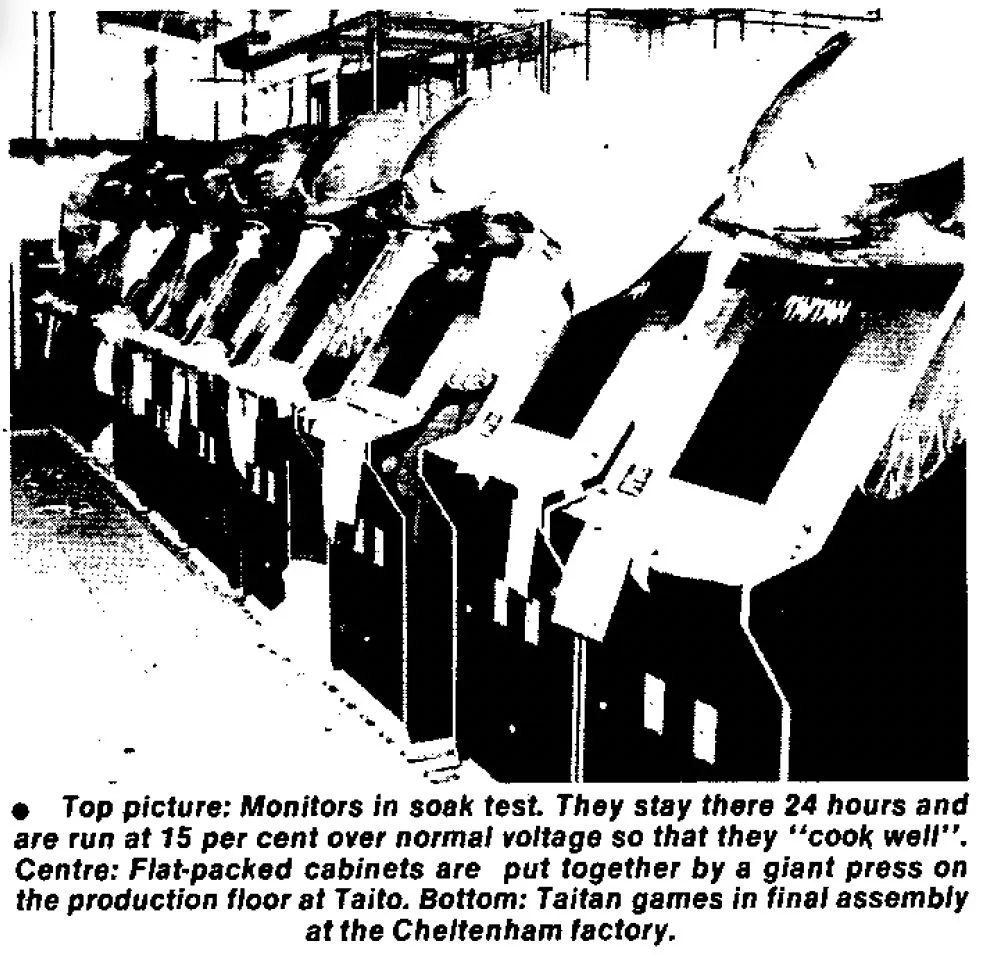
Taito announced the Taitan cabinet for the UK market in February 1981 and produced this flyer:
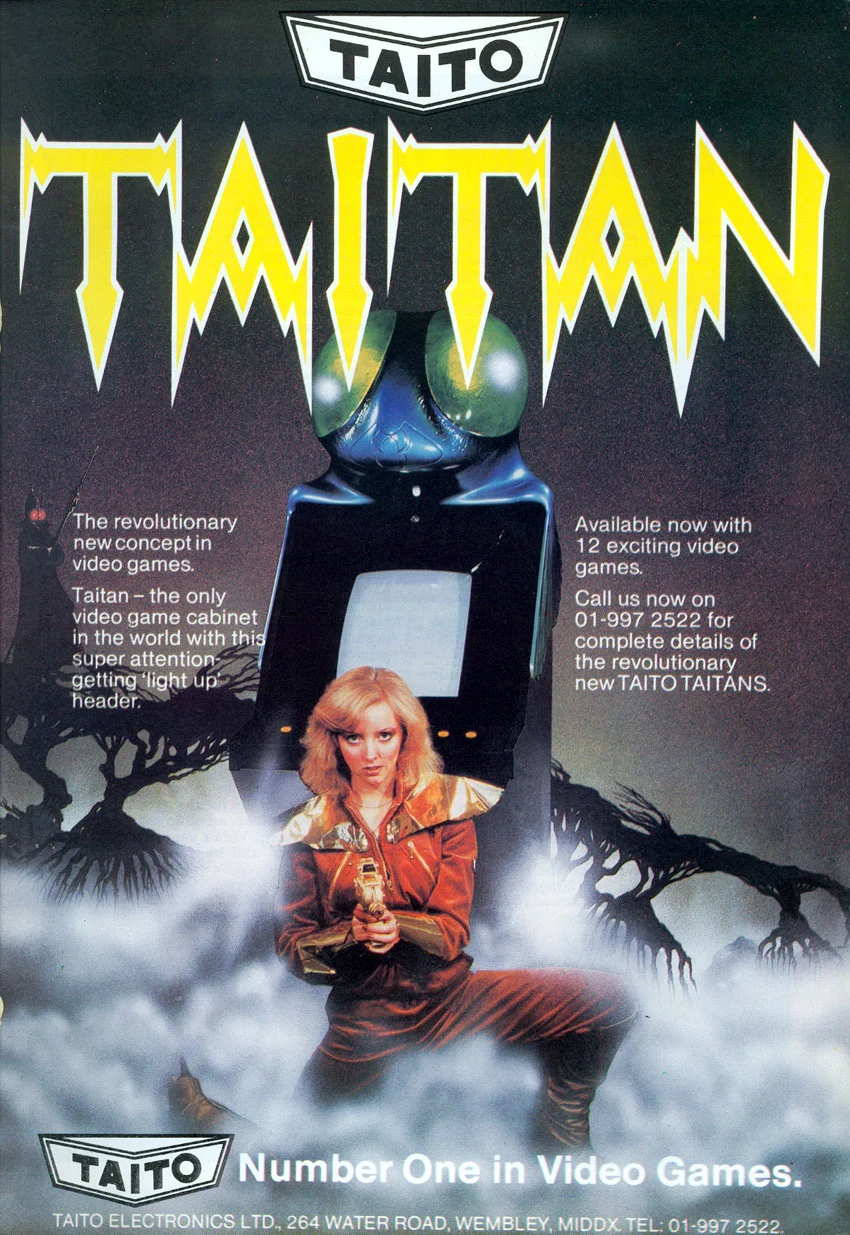
Actual production numbers are impossible to find, but I think its fair to assume that a few hundred rolled off the Ramtek production lines in Cheltenham and were sited across the UK. A few collectors I’ve spoken to recall seeing them out on the arcade floors. Although there were some challenges, as described by Roger and Martyn Dean:
Many amusement arcade operators come from the world of showmen and travelling fairs. Since their Taitans were also pure fairground products, [we] were astonished when the prototypes met some resistance from the trade. We discovered that the showmen’s reluctance was simply over the colour, a vivid metallic green. Showmen are enduringly superstitious, and green is unlucky. When you venture into a new field, you must learn the local folklore, the traditions, the taboos. Even the best-planned projects can fall foul of simple cultural oversights.
Extract form the book “Magnetic Storm” by Roger Dean and Martyn Dean”, 1984
What inspired this post was some pictures shared recently by collector Simon Mills, who is currently restoring a Taito Taitan cabinet:


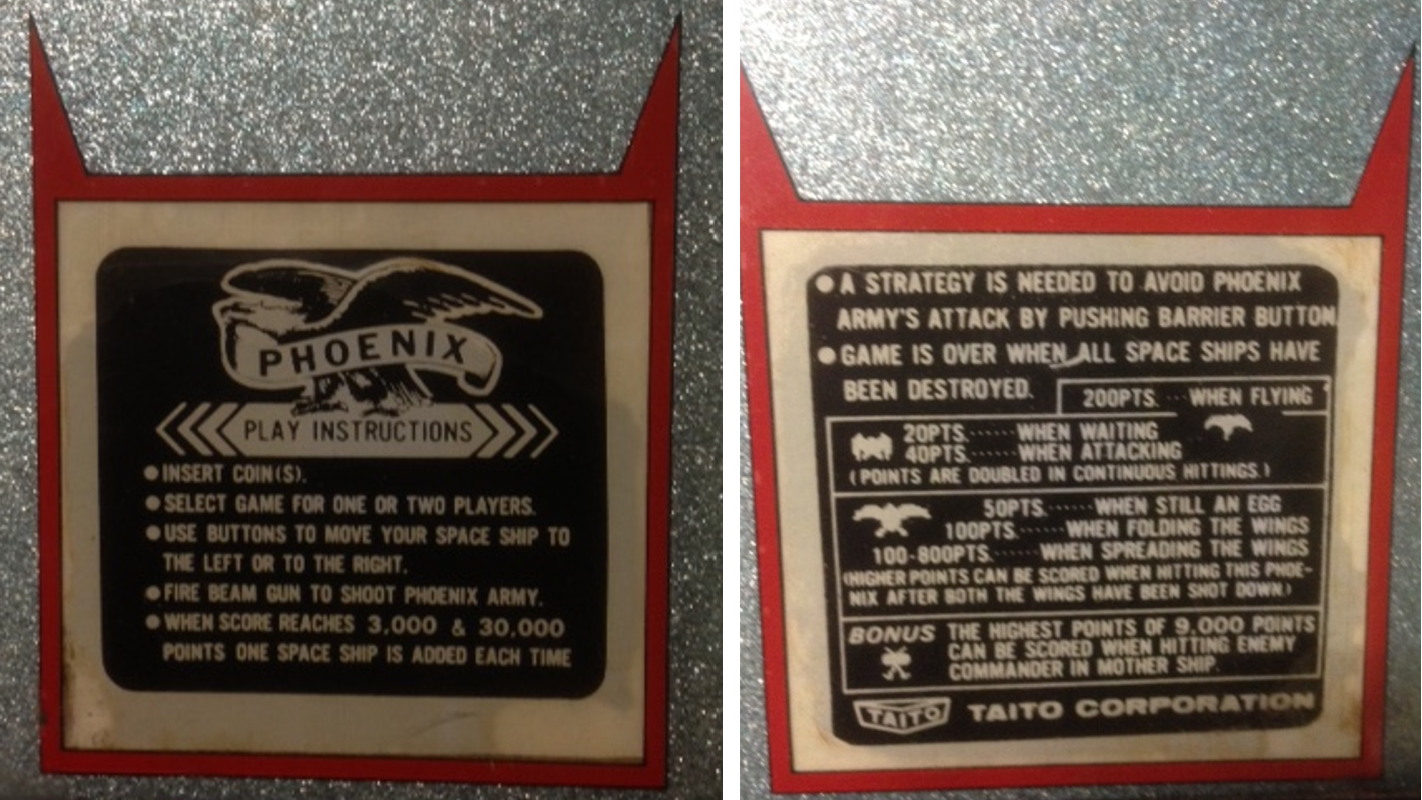
A couple of other Taitans have turned up in recent years. This one was apparently found in an antique dealer’s showroom a few years back:
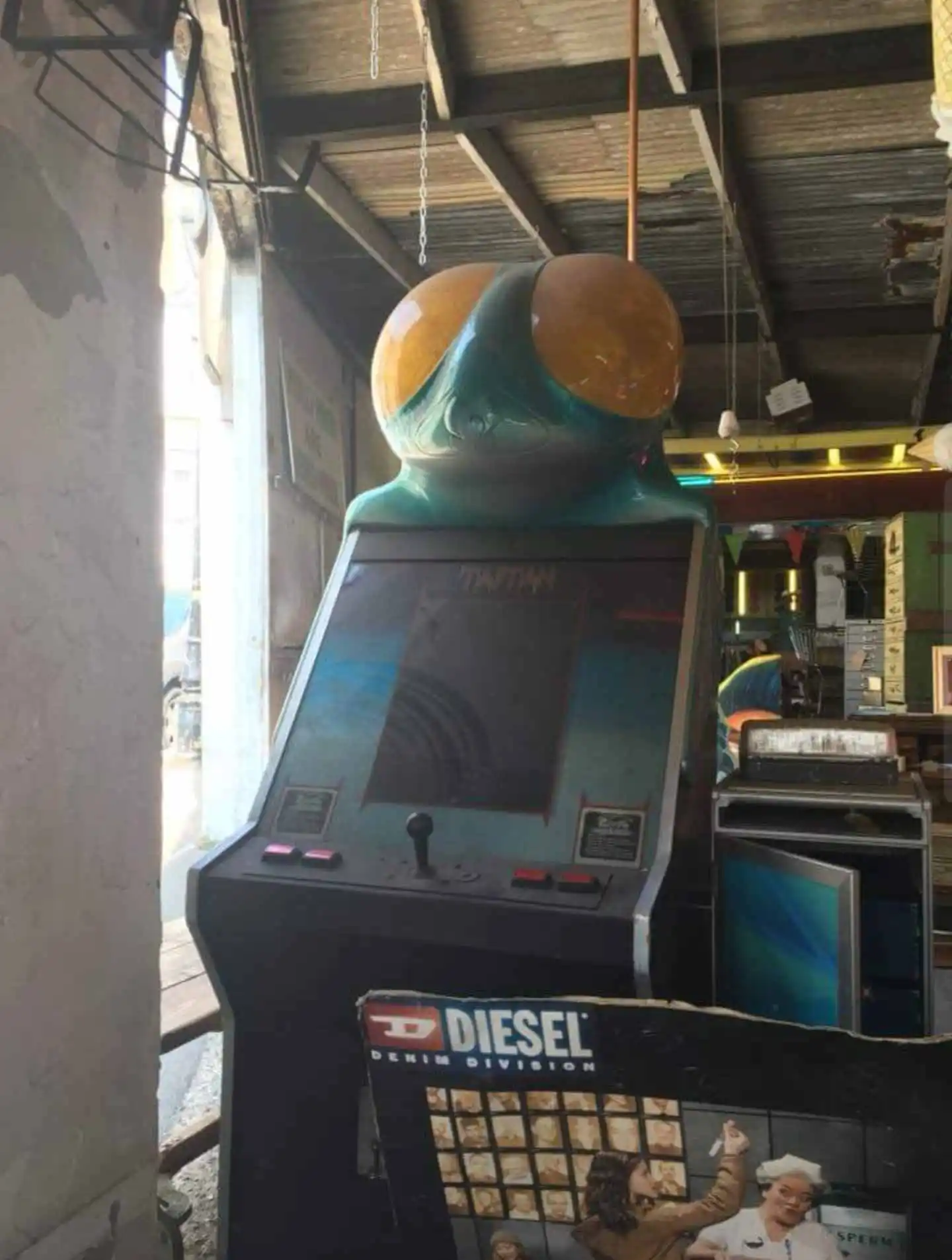



Released in limited numbers, the cabinet design was ultimately dropped. It’s not clear why so few were produced, but presumably Taito decided to go in a different commercial direction.


Even though their designs had a short lifespan, the Deans decided to display a couple of the Taitan machines themselves, creating an installation of what they described as ‘a complete amusement environment’. They placed the cabinets at a public exhibition alongside other more humble looking arcade machines. The Bug and the Robot Knight sat under part of the lighting set that they had previously designed for the band Yes’ live show:
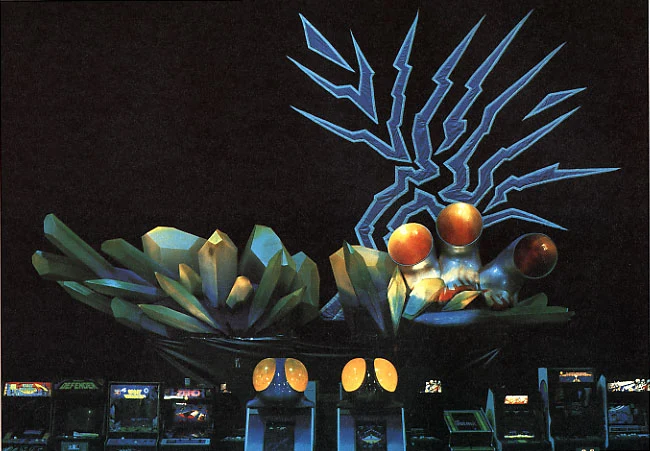

So there you have it. The Taito Taitan cabinet design was certainly unique but sadly had a short lifespan, but great to see a few are still around. A cool piece of British arcade videogame history.
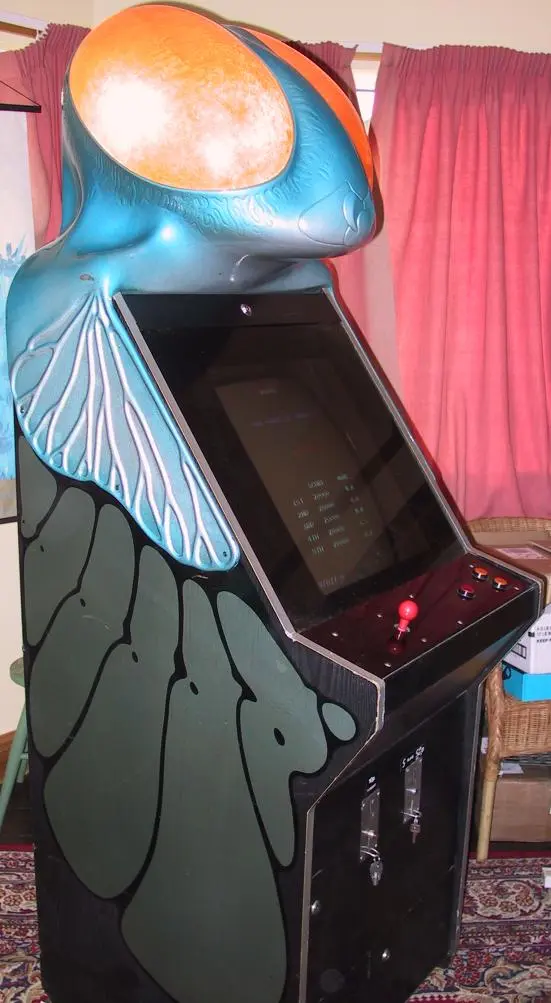
I think I want one!
Extended thanks to Simon Mills, Evan Boardman and Alan Meades for their help in pulling this info, pictures and scans together. I have used some pictures here that I was unable to attribute to anyone – do get in touch if you’d like me to put that right. I did reach out to Roger Dean to ask for his recollections of this brief period in his career but didn’t get a reply. But he is still an active artist and creator, do check out his website here.
Many thanks for reading this week. If you like what you see, feel free to share this article on your socials!
Tony

